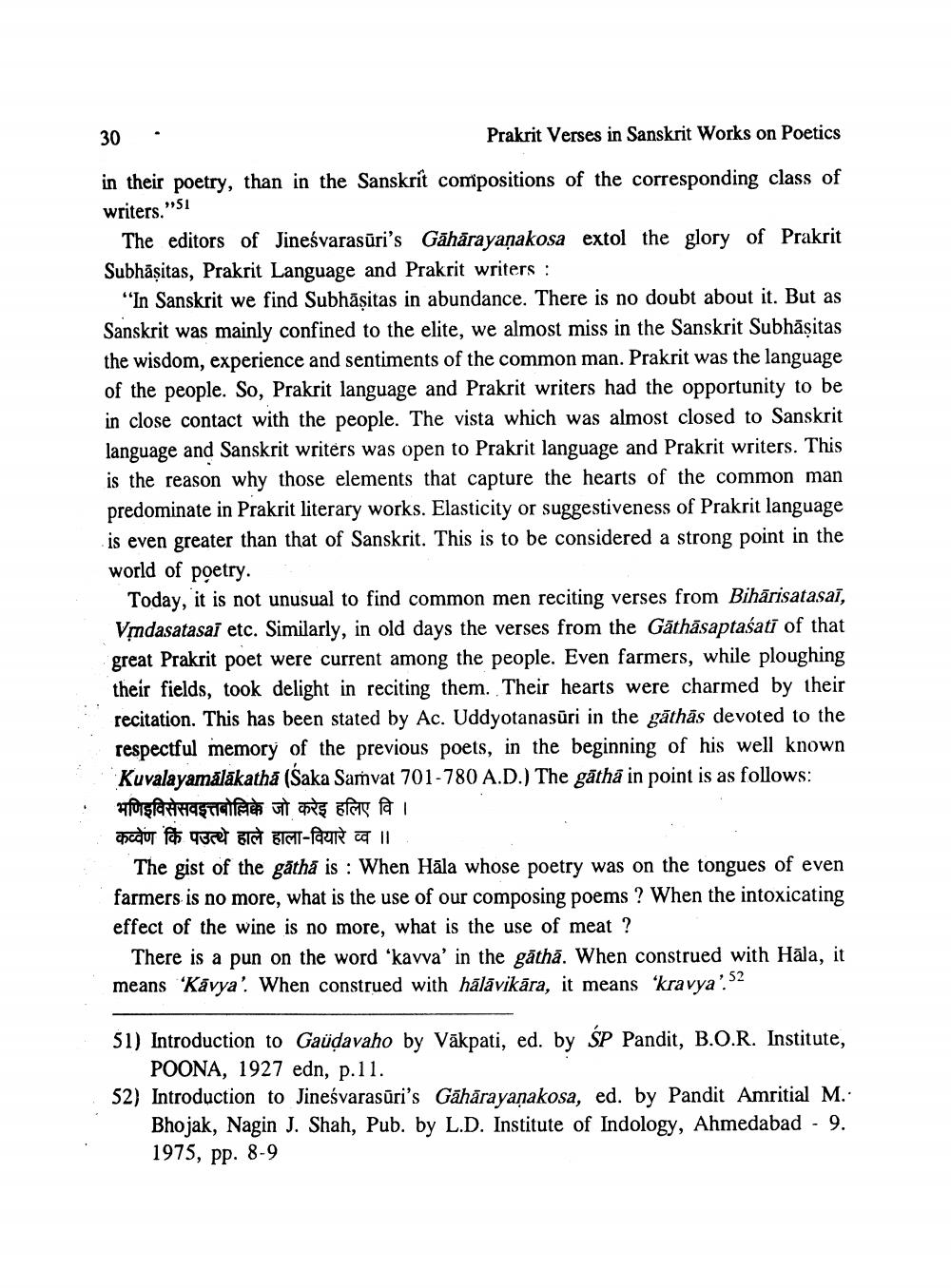________________
30
:
Prakrit Verses in Sanskrit Works on Poetics
in their poetry, than in the Sanskrit compositions of the corresponding class of writers."51
The editors of Jineśvarasūri’s Gāhārayanakosa extol the glory of Prakrit Subhāṣitas, Prakrit Language and Prakrit writers :
"In Sanskrit we find Subhāsitas in abundance. There is no doubt about it. But as Sanskrit was mainly confined to the elite, we almost miss in the Sanskrit Subhāṣitas the wisdom, experience and sentiments of the common man. Prakrit was the language of the people. So, Prakrit language and Prakrit writers had the opportunity to be in close contact with the people. The vista which was almost closed to Sanskrit language and Sanskrit writers was open to Prakrit language and Prakrit writers. This is the reason why those elements that capture the hearts of the common man predominate in Prakrit literary works. Elasticity or suggestiveness of Prakrit language is even greater than that of Sanskrit. This is to be considered a strong point in the world of poetry.
Today, it is not unusual to find common men reciting verses from Bihārisatasai, Vịndasatasai etc. Similarly, in old days the verses from the Gathāsaptaśati of that great Prakrit poet were current among the people. Even farmers, while ploughing their fields, took delight in reciting them. Their hearts were charmed by their recitation. This has been stated by Ac. Uddyotanasūri in the gāthās devoted to the respectful memory of the previous poets, in the beginning of his well known Kuvalayamālākatha (Saka Samvat 701-780 A.D.) The gātha in point is as follows:
forsfa Hastane u arts of a कव्वेण कि पउत्थे हाले हाला-वियारे व्व ॥
The gist of the gātha is : When Hāla whose poetry was on the tongues of even farmers is no more, what is the use of our composing poems ? When the intoxicating effect of the wine is no more, what is the use of meat ?
There is a pun on the word 'kavva' in the gătha. When construed with Hāla, it means "Kavya'. When construed with hālāvikāra, it means 'kravya':52
51) Introduction to Gaudavaho by Vākpati, ed. by ŚP Pandit, B.O.R. Institute,
POONA, 1927 edn, p.11. 52) Introduction to Jineśvarasūri's Gāhārayanakosa, ed. by Pandit Amritial M.:
Bhojak, Nagin J. Shah, Pub. by L.D. Institute of Indology, Ahmedabad - 9. 1975, pp. 8-9




